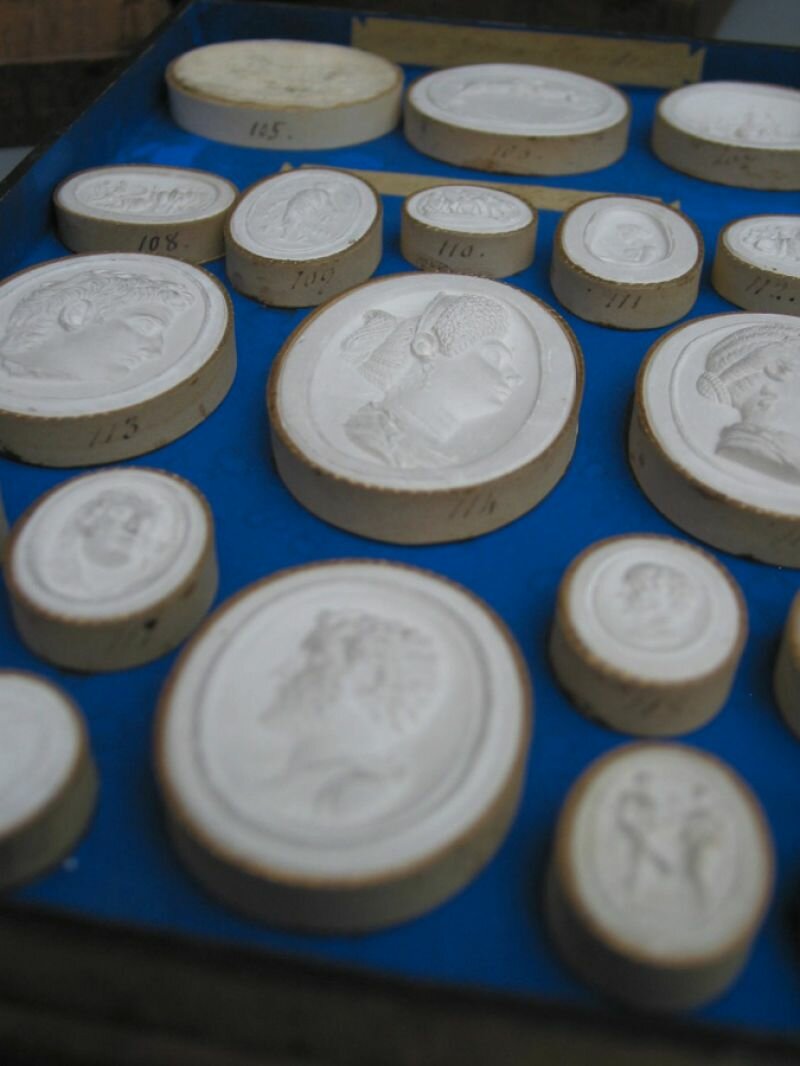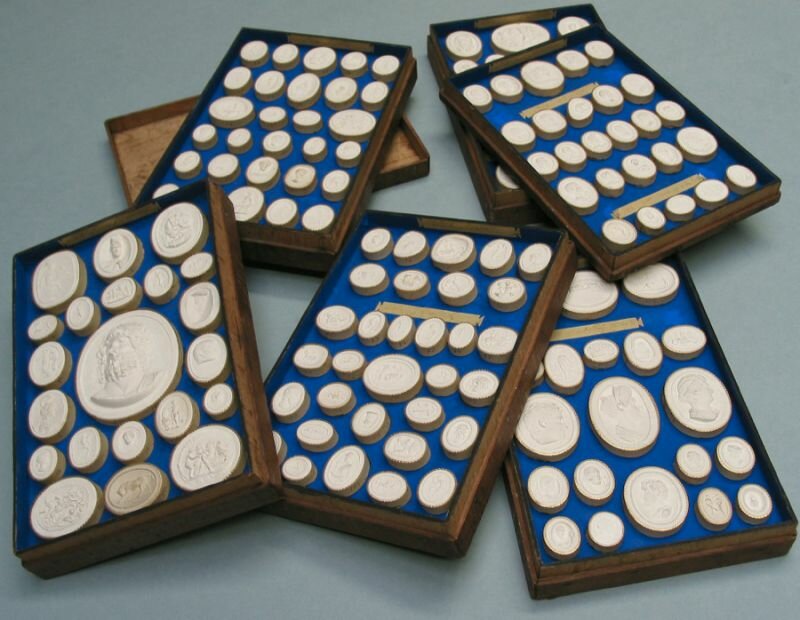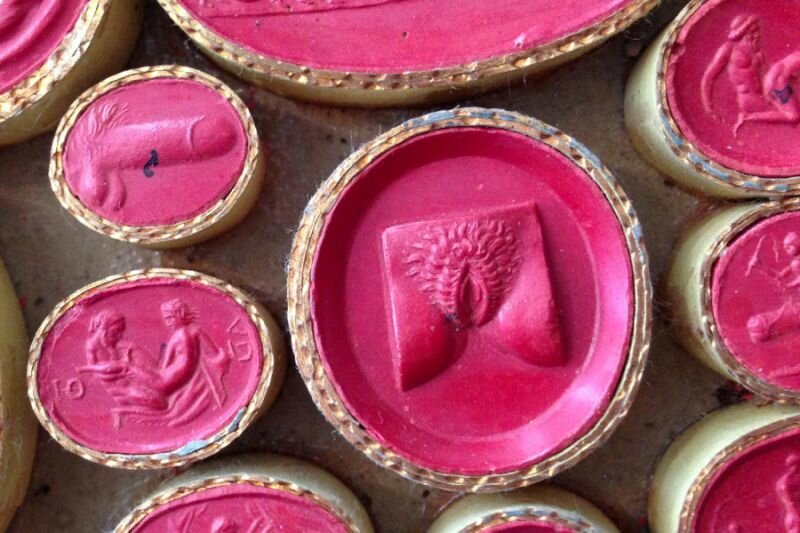
The dactyliotec is the equivalent of the modern day digital photo album. Dactylioteca were stacked boxes containing prints of gems bearing depictions of Roman emperors, philosophers or art works from for example Vatican museums. Most of the imprints, also called intaglios, were done in cast. Some of them were cast in a beautiful red sulphur paste.
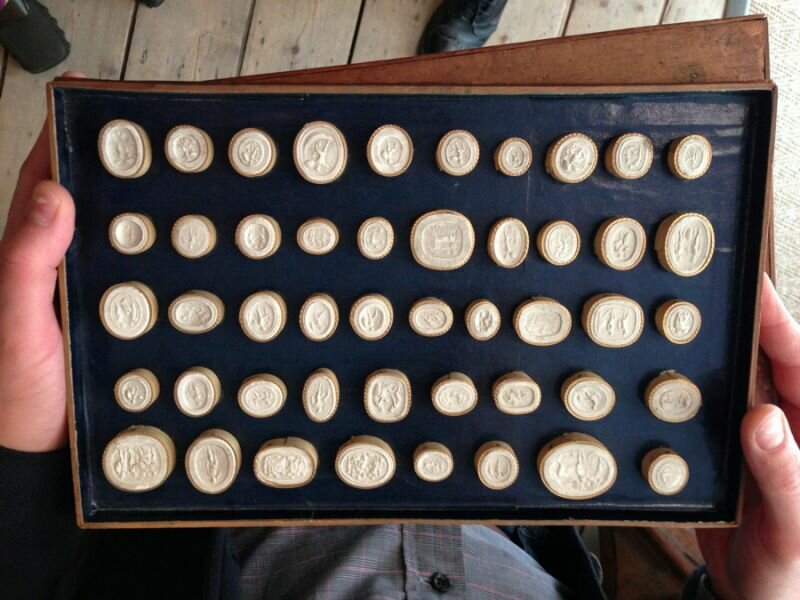
The Grand Tourist started buying them from the beginning of the 19th century at specialized studios and could customize the content description to the latest scientific advances of his time.
Already during the 18th century P.H. Lippert gathered 13149 of these casts in three cabinets in the shape of books. He named the collection a dactylioteca, derived from the Greek word for depository for signet rings with gems. The Amsterdam drawing Academy bought one copy of Lippert in 1792 which is now part of the collection of the Rijksmuseum.
Famous makers of these 19th century collections of casts were Odelli, Liberotti and Paoletti. They all set up their studios in the same area in Rome between the Piazza del Popolo and the Spanish Steps. This was the area where most travellers found shelter upon arrival in Rome and was therefore called the 'English ghetto'.
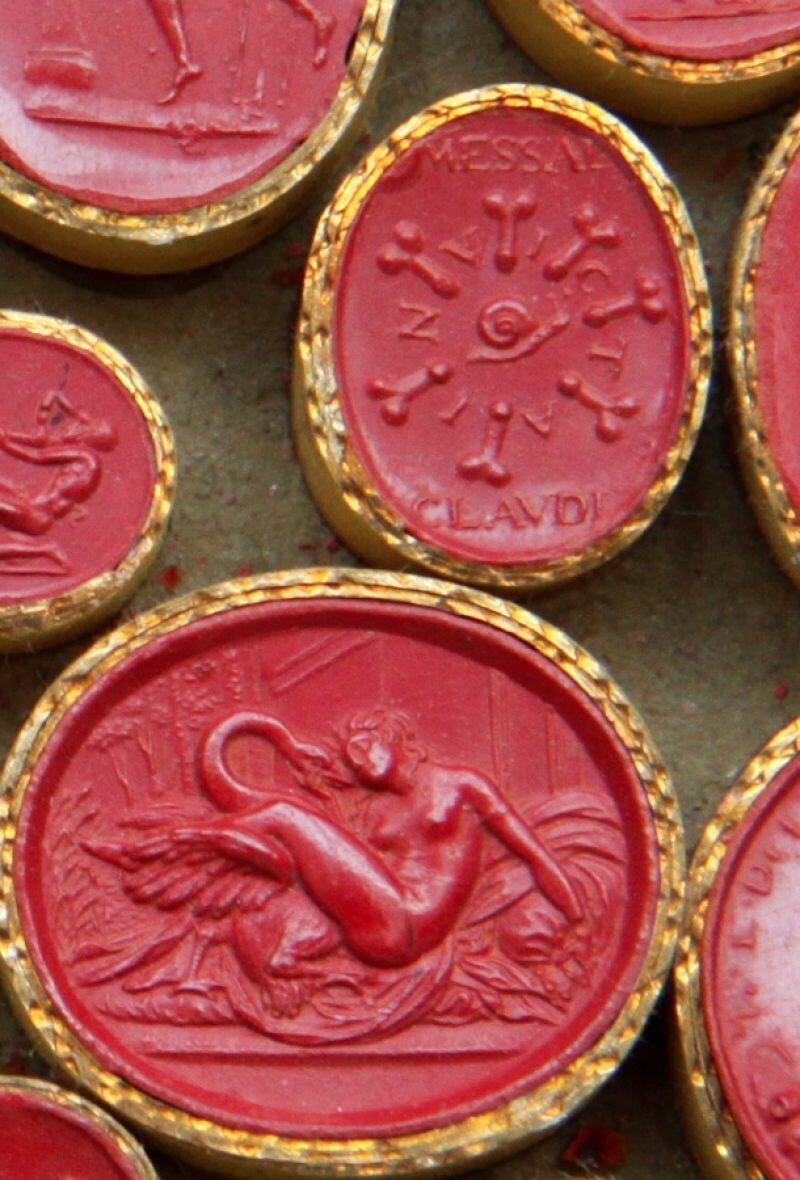
A remarkable copy is the shown here: a set of prints of erotic gems. Since the first half of the 18th century there was a 'gabinetto segreto' in Naples, a secret cabinet that contained the excavations from Pomeï with an erotic tone. The cabinet has known a long history of closings and opening and was even closed with a brick wall in 1849.
This collection of casts is an extraordinary souvenir of a traveller who might have had the luck to find the cabinet opened.
